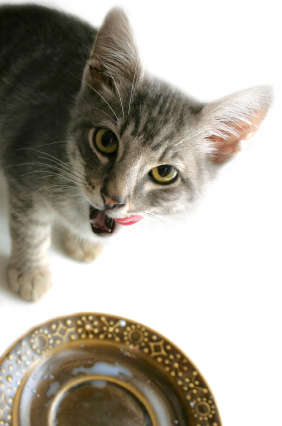Vitamin A Toxicity in Cats

Your cat may love that raw liver treat, but did you know that too much liver can cause severe irreversible disease in cats?
How Is Liver Bad for Cats?
The disease is called hypervitaminosis A, or vitamin A toxicity. Liver contains very high levels of vitamin A, and when fed routinely to a cat for several months, can cause abnormal bone growth due to excessive vitamin A accumulation in the tissues. Extra bone forms at the attachments of tendons and ligaments and where joint capsules attach to bones.
The vertebrae of the neck are usually affected first, but the process can extend to the rest of the spine, the ribs, elbows, and other joints. Eventually, complete fusion of the joints along the spine and elsewhere occurs, resulting in the cat being unable to move his or her neck or affected limbs. The bony growth can also place pressure on nerves as they exit the spinal column, and on the spinal cord itself, which is extremely painful. The cat is reluctant to move, cannot groom his or herself, and may be partially or completely paralyzed. Kittens can also suffer from loose teeth, abnormal tooth development, and bone growth abnormalities.
Unfortunately, the disease is not reversible once the extensive bony changes have occurred. If the diet is corrected early enough, however, some of the stiffness and discomfort can be alleviated. It can be challenging, though, to introduce a different diet to a cat that has become accustomed to eating liver. Some cats will simply refuse to eat anything else. It is, therefore, very important to feed your cat a good quality cat food that is scientifically formulated to meet specific dietary needs right from the start. Avoiding liver altogether is the wisest choice.
You May Also Like These Articles:
Fishy Food and Feline Hyperthyroidism
Helpful Tips for Getting Your Cat to Eat More Canned Food
Why Do Some Cats Carry Food Out Of Their Bowls to Eat It?
Ethoxyquin, Mercury, and PCBs: Is Feeding Fish Safe for Cats?
Foods Toxic to Cats - Slideshow
Wet Food vs. Dry Food For Cats



